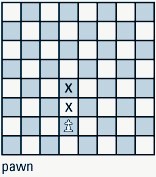Castling is the act of moving a rook from its original square to the side opposite the king. In chess, castling is done when the player’s king is attacked by the opposing king and the defending player wishes to move his/her rook out of harm’s way. Each side only gets to castle once in a game.
As per Wikipedia: Castling originates from the king’s leap, a two-square king move added to European chess between the 14th and 15th centuries, and took on its present form in the 17th century; however, local variations in castling rules were common, persisting in Italy until the late 19th century.
Castling is when a player moves their king two squares diagonally forward (or backwards) without first moving any pawns. Castling is generally only allowed if the opponent’s king is exposed, meaning that he cannot move anywhere else. If the king is protected, then the king may not castle.
One thought is – Long Castling gets our King safer than uncastled, but a pawn if still there and remains unprotected. It is an observation that in Scandinavian and Caro-Kann, it’s very common to castle queenside as black.
Castling is permitted only if neither the king nor the rook has previously moved; the squares between the king and the rook are vacant; and the king does not leave, cross over, or end up on a square attacked by an opposing piece. Castling is the only move in chess in which two pieces are moved at once.
On a case to case basis:
If the king is not exposed, then the player may castle. However, if the king is exposed, then the king may only castle if the rook is on its original square.
If the king is exposed, the king may not castle unless the rook is on its own square.
If the king is protected, the king may not castling unless the rook is on the same color of square as the king.
A few castling game variations:
In Fischer Random (Chess 960), There are two types:
Transposition castling:
for this castling you need to pick up both the king and rook (in either order), and place them on their final squares
Double-move castling:
For this type of castling, you need to move the king to its final square and move the rook to its final square as two separate moves, in either order.
“No-Castling Chess” is the brainchild of Vladimir Kramnik, who worked with the world’s leading artificial intelligence (AI) company DeepMind and its system AlphaZero to explore the possibilities of the variant.
All the rules of chess remain the same in a No-castling chess tournament, except that none the players can castle. As per news, first ever “no-castling” tournament had resulted in 89% decisive games which in itself is an achievement.
In 2021, GM Viswanathan Anand defeated GM Vladimir Kramnik 2.5-1.5 in a four-game No Castling chess match in Dortmund, Germany.


